#concrete plant park
Text
Bronx Community Banquet
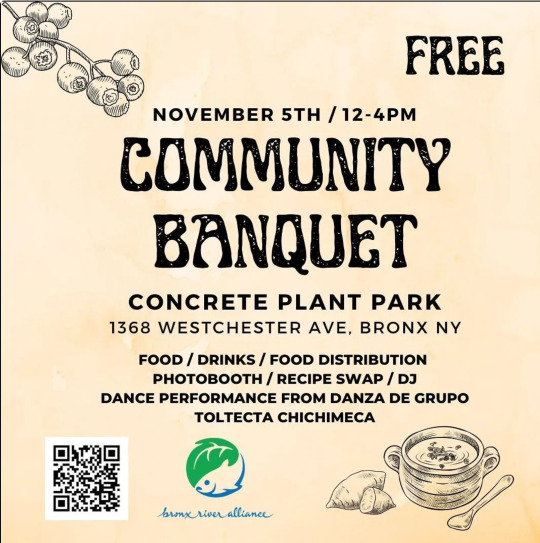
View On WordPress
0 notes
Video
20230902 Syurakuen 1 by Bong Grit
Via Flickr:
東海市の聚楽園公園へ。ん?あれは! @Syurakuen park, Tokai city, Aichi pref. (愛知県東海市 聚楽園公園)
#Forest#Bush#Nature#Plant#Buddha statue#Huge statue of Buddha#Great Buddha#Concrete#Buddhism#Syurakuen#Syurakuen park#Park#City park#Tokai#Aichi#Japan#SONY#SONY RX100M3#flickr
17 notes
·
View notes
Text

#Photography#Oct. 2018#Outdoors#Distance#Tennis Court#Sports#Apartments#Buildings#Windows#Roof Tops#Brick Walls#Trucks#Vehicles#Parking Lot#Sidewalk#Wire Fence#Chainlink Fence#Planted Trees#Metal Poles#Clouds#Sky#Leaves#Branches#Grass#Silhouettes#Nature#Pavement#Concrete#Tennis#Courts
2 notes
·
View notes
Text

#bicycle#parking#house#home#architecture#street#nature#plants#tokyo#japan#street photography#light#shadow#open#concrete#brutalist#staircase#modernism#modern architecture#urban photography#urban landscape#urban life#city#city life#buildings#urban
2 notes
·
View notes
Note
avoiding the obvious one and saying: walks! and delightful finds that you encounter. always nice to see you sharing a bone fragment, a berry bush, bugs, or flowers that you saw on your walks in the server :))
WAAAH OMG YEAHH 🫶🫶🫶🫶 tyyyyy
forreal tho just being out in nature is so so important to me. and i have to tell everybdoy about it. did you know theres so many guys out there !!!
#i dont wanna just scrap my lifelong career plan of something computing related but i do want to try for a park maintenance/interpreter job#like for now its the only concrete job i can imagine myself doing and enjoying#highly recommend for Everyone to research their areas native ecosystems and get involved in local park district activities#life is so much more fun when u are friends with every native plant and passerine within a 50 mile radius#also sometimes you will see deer 🦌#ask#i hiked for like 10 miles of rough terrain this weekend its insnae to actually be good at a physical activity for once in my life#and i saw 3 black tailed does 🫶 and an emu but that was just uh in some guys yard so
3 notes
·
View notes
Text
"With “green corridors” that mimic the natural forest, the Colombian city is driving down temperatures — and could become five degrees cooler over the next few decades.
In the face of a rapidly heating planet, the City of Eternal Spring — nicknamed so thanks to its year-round temperate climate — has found a way to keep its cool.
Previously, Medellín had undergone years of rapid urban expansion, which led to a severe urban heat island effect — raising temperatures in the city to significantly higher than in the surrounding suburban and rural areas. Roads and other concrete infrastructure absorb and maintain the sun’s heat for much longer than green infrastructure.
“Medellín grew at the expense of green spaces and vegetation,” says Pilar Vargas, a forest engineer working for City Hall. “We built and built and built. There wasn’t a lot of thought about the impact on the climate. It became obvious that had to change.”
Efforts began in 2016 under Medellín’s then mayor, Federico Gutiérrez (who, after completing one term in 2019, was re-elected at the end of 2023). The city launched a new approach to its urban development — one that focused on people and plants.
The $16.3 million initiative led to the creation of 30 Green Corridors along the city’s roads and waterways, improving or producing more than 70 hectares of green space, which includes 20 kilometers of shaded routes with cycle lanes and pedestrian paths.
These plant and tree-filled spaces — which connect all sorts of green areas such as the curb strips, squares, parks, vertical gardens, sidewalks, and even some of the seven hills that surround the city — produce fresh, cooling air in the face of urban heat. The corridors are also designed to mimic a natural forest with levels of low, medium and high plants, including native and tropical plants, bamboo grasses and palm trees.
Heat-trapping infrastructure like metro stations and bridges has also been greened as part of the project and government buildings have been adorned with green roofs and vertical gardens to beat the heat. The first of those was installed at Medellín’s City Hall, where nearly 100,000 plants and 12 species span the 1,810 square meter surface.
“It’s like urban acupuncture,” says Paula Zapata, advisor for Medellín at C40 Cities, a global network of about 100 of the world’s leading mayors. “The city is making these small interventions that together act to make a big impact.”
At the launch of the project, 120,000 individual plants and 12,500 trees were added to roads and parks across the city. By 2021, the figure had reached 2.5 million plants and 880,000 trees. Each has been carefully chosen to maximize their impact.
“The technical team thought a lot about the species used. They selected endemic ones that have a functional use,” explains Zapata.
The 72 species of plants and trees selected provide food for wildlife, help biodiversity to spread and fight air pollution. A study, for example, identified Mangifera indica as the best among six plant species found in Medellín at absorbing PM2.5 pollution — particulate matter that can cause asthma, bronchitis and heart disease — and surviving in polluted areas due to its “biochemical and biological mechanisms.”
And the urban planting continues to this day.
The groundwork is carried out by 150 citizen-gardeners like Pineda, who come from disadvantaged and minority backgrounds, with the support of 15 specialized forest engineers. Pineda is now the leader of a team of seven other gardeners who attend to corridors all across the city, shifting depending on the current priorities...
“I’m completely in favor of the corridors,” says [Victoria Perez, another citizen-gardener], who grew up in a poor suburb in the city of 2.5 million people. “It really improves the quality of life here.”
Wilmar Jesus, a 48-year-old Afro-Colombian farmer on his first day of the job, is pleased about the project’s possibilities for his own future. “I want to learn more and become better,” he says. “This gives me the opportunity to advance myself.”
The project’s wider impacts are like a breath of fresh air. Medellín’s temperatures fell by 2°C in the first three years of the program, and officials expect a further decrease of 4 to 5C over the next few decades, even taking into account climate change. In turn, City Hall says this will minimize the need for energy-intensive air conditioning...
In addition, the project has had a significant impact on air pollution. Between 2016 and 2019, the level of PM2.5 fell significantly, and in turn the city’s morbidity rate from acute respiratory infections decreased from 159.8 to 95.3 per 1,000 people [Note: That means the city's rate of people getting sick with lung/throat/respiratory infections.]
There’s also been a 34.6 percent rise in cycling in the city, likely due to the new bike paths built for the project, and biodiversity studies show that wildlife is coming back — one sample of five Green Corridors identified 30 different species of butterfly.
Other cities are already taking note. Bogotá and Barranquilla have adopted similar plans, among other Colombian cities, and last year São Paulo, Brazil, the largest city in South America, began expanding its corridors after launching them in 2022.
“For sure, Green Corridors could work in many other places,” says Zapata."
-via Reasons to Be Cheerful, March 4, 2024
#colombia#brazil#urban#urban landscape#urban planning#cities#civil engineering#green architecture#green spaces#urban heat#urban heat island effect#weather#meteorology#global warming#climate change#climate hope#climate optimism#climate emergency#climate action#environment#environmental news#city architecture#bicycling#native plants#biodiversity#good news#hope#solarpunk#ecopunk#hopepunk
16K notes
·
View notes
Text
Ful-Flo specializes in fountain services
#Ful-Flo specializes in fountain services#spray parks#agricultural & golf irrigation. We cover residential & commercial areas in Winnipeg & Manitoba.#Fountains services winnipeg#Fountains repairs manitoba#Agricultural irrigation manitoba#water treatment plants winnipeg#Ful-Flo Industries Ltd. was first incorporated in 1976. Providing irrigation and concrete splash or spray pads in Winnipeg#Manitoba and NW Ontario#Ful-Flo Industries is located on the outskirts of Winnipeg on the north Perimeter Highway just a ½ mile west of Highway#7#keywords:#Golf irrigation winnipeg#Spray pads winnipeg#Article:#Ful-Flo Industries Ltd. offers a warehouse of possibilities regarding the residential/do-it-yourself markets for irrigation in Manitoba. If#Read more#GOLF IRRIGATION#Ful-Flo Industries Ltd. is proud to support the golf course industry with the best product#people and equipment available. From our parts and service counter that will support#Agricultural irrigation winnipeg#AGRICULTURAL IRRIGATION#From its earliest days#Ful-Flo Industries Ltd. has left its mark in the agriculture industry. One of Ful-Flo Industries Ltd.'s major markets is the Manitoba Potat#fountains services manitoba#FOUNTAINS#A fountain conveys elegance and relaxation#while drawing attention to your area of interest It is human nature to be drawn to the beautiful fountain on your area#Spray pads manitoba#SPRAY PARKS
1 note
·
View note
Text
Fountain & Irrigation Services Experts in Winnipeg
#Ful-Flo specializes in fountain services#spray parks#agricultural & golf irrigation. We cover residential & commercial areas in Winnipeg & Manitoba.#Fountains services winnipeg#Fountains repairs manitoba#Agricultural irrigation manitoba#water treatment plants winnipeg#Ful-Flo Industries Ltd. was first incorporated in 1976. Providing irrigation and concrete splash or spray pads in Winnipeg#Manitoba and NW Ontario#Ful-Flo Industries is located on the outskirts of Winnipeg on the north Perimeter Highway just a ½ mile west of Highway#7#keywords:#Golf irrigation winnipeg#Spray pads winnipeg#Article:#Ful-Flo Industries Ltd. offers a warehouse of possibilities regarding the residential/do-it-yourself markets for irrigation in Manitoba. If#Read more#GOLF IRRIGATION#Ful-Flo Industries Ltd. is proud to support the golf course industry with the best product#people and equipment available. From our parts and service counter that will support#Agricultural irrigation winnipeg#AGRICULTURAL IRRIGATION#From its earliest days#Ful-Flo Industries Ltd. has left its mark in the agriculture industry. One of Ful-Flo Industries Ltd.'s major markets is the Manitoba Potat#fountains services manitoba#FOUNTAINS#A fountain conveys elegance and relaxation#while drawing attention to your area of interest It is human nature to be drawn to the beautiful fountain on your area#Spray pads manitoba#SPRAY PARKS
0 notes
Photo
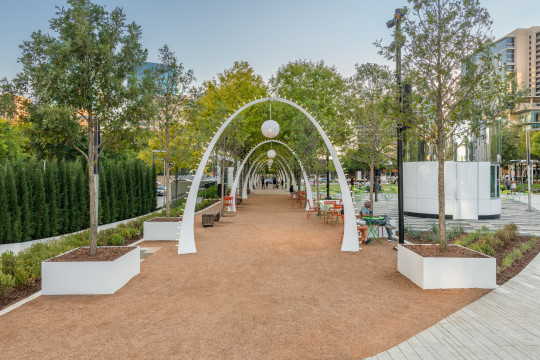
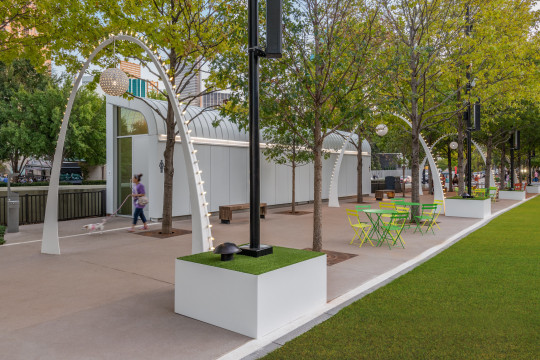
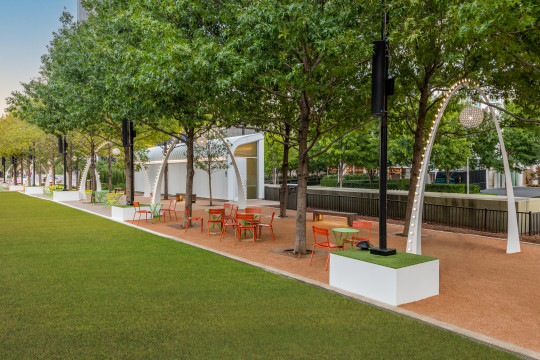
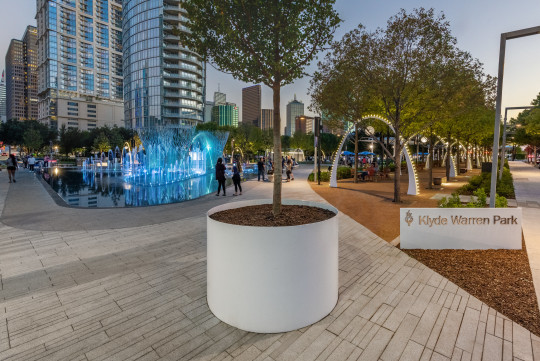
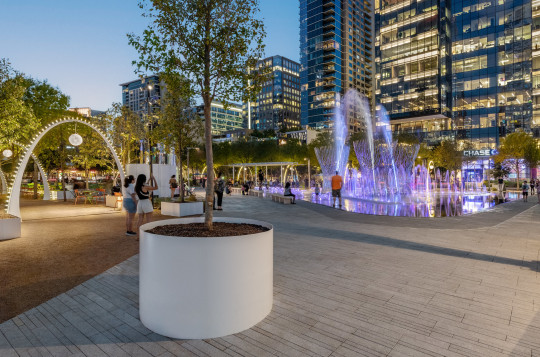
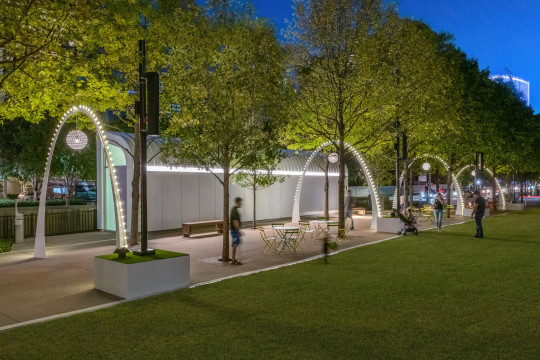
The Frio Series and Box Series planters from Form & Fiber at Klyde Warren Park in Dallas, Texas are available in both metal and concrete. They are located around the newly installed Nancy Best Fountain near Pearl Street. This was a part of the Phase 2.0 renovation at the park that was completed in 2022. The fountain and park design team consisted of Fluidity Design Consultants, McCarthy Building Companies, Jacobs and Bjerke Management Solutions.
© Wade Griffith Photography 2023
#planter#Form & Fiber#kylde warren park#cylinder#outdoor#design#metal#concrete#Nancy Best Fountain#Pearl Street#renovation#park#city#urban green space#design team#construction#engineering#architecture#trees#plants#Dallas Texas#downtown#Frio Planter Series
0 notes
Photo

Modern Landscape - Mulch
#Photo of a small modern full sun front yard mulch garden path in fall. modern#concrete columns#entry gate#landscape design#parking strip planting#horizontal fence boards#planting strip
0 notes
Text
There is a man with fire-red hair running a bookshop in Soho.
He hasn't always been the original owner, as almost all residents on Whickber Street know, but it is a fact you never bring up with him. Hiding behind a pair of sunglasses and layers of rough sarcasm, he is a shadow moving silently between shelves and plants, the Bentley parked outside seemingly more for decoration than actual use.
Previously, there had been a white-haired man with gentle eyes and a favour up his sleeves living among his books, and while he barely sold any of them, he was a pillar of the community just like the building itself. When he disappeared, an unspoken vow to never discuss the subject matter in the vicinity of the shop was made.
There is a woman with fire-red hair sitting in St. James's Park.
She feeds frozen peas to the ducks and puts the fear of God into everyone who dares to offer them bread or attempts to scare them away. The bench is hers, always empty, awaiting her arrival; sometimes she brings a bottle of wine, other times she cradles a Polaroid in the palm of her hand, and even the dark shades cannot stop the occasional tear from dripping down her cheek.
Rumours of her companion and his absence spread quickly, yet no one dares to ask, and the spies scattered around the park form a mutual understanding to avoid her.
There is a person with fire-red hair wandering the streets of London, wearing sunglasses and no coat, no matter the weather or time.
Their head is tipped back, their eyes glued to the sky, and yet they navigate through the masses parting around them with an unnatural ease. No one stops them, no one dares to ask why, and even if they did, they wouldn't offer an answer, not when they are asking themself the very same question.
When it begins to rain, they stop moving, stretching out their hands in a weak imitation of a prayer and allowing the water to seep into their clothes until they're as dark as the wet concrete beneath them.
There is a man with blinding white hair stepping out of an elevator that does not exist, and the end of the world comes with him. If someone were to listen in, they would realise that the man with fire-red hair meets him in the middle of the street, the air thick with lightning that will never find a home.
As they talk, nightingales all over London begin to sing.
#alex writes good omens#good omens#ineffable husbands#crowley#aziraphale#good omens season 2#go2#aziracrow#crowley x aziraphale#ineffable divorce#good omens ficlet#a little warm up improvisation
2K notes
·
View notes
Photo

#bronxriver #concreteplantpark #trees #woods #bridge #graffitiart #urbanart #bronx #river #concreteplant #park #graffiti #concrete #plant #newyorkcity #newyork #art https://www.instagram.com/p/Ckllu1TrnLg/?igshid=NGJjMDIxMWI=
#bronxriver#concreteplantpark#trees#woods#bridge#graffitiart#urbanart#bronx#river#concreteplant#park#graffiti#concrete#plant#newyorkcity#newyork#art
1 note
·
View note
Video
20230902 Syurakuen 2 by Bong Grit
Via Flickr:
でたっ!でかっ!! @Syurakuen park, Tokai city, Aichi pref. (愛知県東海市 聚楽園公園)
#Forest#Bush#Nature#Plant#Buddha statue#Huge statue of Buddha#Great Buddha#Concrete#Buddhism#Syurakuen#Syurakuen park#Park#City park#Tokai#Aichi#Japan#SONY#SONY RX100M3#flickr
4 notes
·
View notes
Text


#Photography#Oct. 2018#Outdoors#Distance#Wooden Benches#Park Bench#Plaque#Woodworks#Tennis Courts#Brick Sidewalk#Metal#Mulch#Tree Trunks#Tree Bark#Planted Trees#Vehicles#Vans#Tires#Cracks#Wire Fence#Leaves#Grass#Sunlight#Field#Silhouettes#Nature#Pavement#Concrete#Benches#Park
2 notes
·
View notes
Text
In just eight blocks of sidewalk in quiet neighborhood, walking through the not-quite-rain of a sunshower, today I encountered four missing shoe soles. Little pieces of plastic and rubber, detached from pedestrians' shoes, now lonely on the concrete, with the weeds.
No such thing, really, as a "weed", though. "Weed" is not a botanical term. Instead, describes perceived pests, at the discretion of the observer. At the discretion of the authority. Designated as weed by the one with power over that land. The agronomist, the rancher, the plantation manager. The weed wastes space that could otherwise be given to a monoculture cash crop, an "economically significant" plant. The weed interferes with the productivity of the plot of land. The weed interrupts the extraction. The weed diminishes the value. The weed doesn't belong in this place.
People are made to be weeds, too.
Some cities will designate you as a weed, and then they'll take action to pull you out. They'll uproot you. But it's not always explicit, like "we're outlawing loitering" or "we're outlawing taking a nap in the park" or "we're defunding the library". Sometimes it's quite clever, it's written into the physical landscape. Self-congratulatory "progressive" cities learn to co-opt language, to obscure the violence, to use and abuse space.
Thinking about things you might encounter, you might perceive, after you've been destitute, broken, lived at a homeless shelter, for years. Little signs of other peoples' misery. Indicators of desperation that some might overlook. And the way that environment shapes, and is shaped by, these miseries.
A friend asks "why is there always an unusual amount of scuffed detached missing shoe soles on this particular stretch of sidewalk? There are hardly any homes around here, it's all asphalt and empty lots, so where are all these be-shoed people coming from?" Because even though this is a wide expanse without either home residences or any kind of commercial or recreation space someone would want to visit, these blocks are the straight-line direct path between a low-income apartment complex and the cluster of corporate big box stores, and there's no bus line that runs between the two areas. "But don't the vast majority of customers of shopping malls and box stores drive vehicles, hence the obscenely massive parking lots?" Sure, customers drive, but guess who actually has to work at those places? An underclass of people living at that apartment complex with harsh restrictions and cheap amenities, who can't afford car insurance or who might be too physically disabled to bike. And so that apartment complex is a de facto "company town", the residents are essentially in confinement. It is written into that landscape. It can be read. "Why is there always debris, wrappers, coins, etc. in this particular quiet couple of blocks of the boulevard?" Because these blocks are between a thrift store and a same-day drop-in clinic, so many impoverished people will routinely be walking between these two locations. They attend their appointment, and then have forty-five minutes to kill before the bus comes back around, so why not check out the thrift store? The city and county collaborated and placed all the low-income assistance offices on the far side of town, which conveniently forces the poor and disabled to both stay away from the luxurious downtown district and also to waste their time making a four-hour commute, catching various connecting buses or else riding the bikepath, across the city just to attend a ten-minute-long appointment.
Then this spatial layout, this city's physical environment, will shape the physical body. This violence writes itself into the flesh. The way the denim is chafed and discolored on the left shoulder of someone's jacket from carrying a small backpack around by foot, day after day after day. The way someone's heart rate increases when they see a white and black vehicle in the periphery of their vision, subconsciously recollecting institutionalization and institutional abuse, or fearing what a ticket fee would mean for their budget (they might not be able to afford rent). The way someone develops a painful limp, maybe occasionally depends on a cane, because they had to walk great distances every day to get to work and their shoe sole fell off on the sidewalk, but they can't replace the shoes because their employer is underpaying them, and they're forced to stand all day at work anyway, and they already had some modest nerve damage in their foot because they've been rationing their insulin and can't afford their prescriptions, and federal medical insurance keeps denying them because their physical letters in the mail always show up too late or not at all, and groceries are too expensive so it's hard to get good nutrition to heal, but the diabetic nerve damage has by now damaged their digestive tract too so they have a strictly limited bland diet and can't enjoy the simple pleasure of a home-cooked meal (if they can even afford a home, at this point), and all those "little" miseries add up, and now they're hungry, and in pain, because they were forced to walk kinda funny for a long time over all those decaying sidewalks with all those other weeds.
640 notes
·
View notes
Text
Good News - June 8-14
Like these weekly compilations? Tip me at $Kaybarr1735! And if you tip me and give me a way to contact you, at the end of the month I'll send you a link to all of the articles I found but didn't use each week!
1. Rare foal born on estate for first time in 100 years

“The Food Museum at Abbot's Hall in Stowmarket, Suffolk, is home to a small number of Suffolk Punch horses - a breed considered critically endangered by the Rare Breeds Survival Trust. A female foal was born on Saturday and has been named Abbots Juno to honour the last horse born at the museum in 1924. [...] Juno is just one of 12 fillies born so far this year in the country and she could potentially help produce more of the breed in the future.”
2. The cement that could turn your house into a giant battery

“[Scientists] at Massachusetts Institute of Technology (MIT) have found a way of creating an energy storage device known as a supercapacitor from three basic, cheap materials – water, cement and a soot-like substance called carbon black. [... Supercapacitators] can charge much more quickly than a lithium ion battery and don't suffer from the same levels of degradation in performance. [... Future applications of this concrete might include] roads that store solar energy and then release it to recharge electric cars wirelessly as they drive along a road [... and] energy-storing foundations of houses.”
3. New road lights, fewer dead insects—insect-friendly lighting successfully tested

“Tailored and shielded road lights make the light source almost invisible outside the illuminated area and significantly reduces the lethal attraction for flying insects in different environments. [...] The new LED luminaires deliver more focused light, reduce spill light, and are shielded above and to the side to minimize light pollution. [... In contrast,] dimming the conventional lights by a factor of 5 had no significant effect on insect attraction.”
4. When LGBTQ health is at stake, patient navigators are ready to help

“[S]ome health care systems have begun to offer guides, or navigators, to get people the help they need. [... W]hether they're just looking for a new doctor or taking the first step toward getting gender-affirming care, "a lot of our patients really benefit from having someone like me who is there to make sure that they are getting connected with a person who is immediately going to provide a safe environment for them." [... A navigator] also connects people with LGBTQ community organizations, social groups and peer support groups.”
5. Tech company to help tackle invasive plant species

“Himalayan balsam has very sugary nectar which tempts bees and other pollinators away from native plants, thereby preventing them from producing seed. It outcompetes native plant species for resources such as sunlight, space and nutrients. [...] The volunteer scheme is open to all GWT WilderGlos users who have a smartphone and can download the Crowdorsa app, where they can then earn up to 25p per square meter of Balsam removed.”
6. [Fish & Wildlife] Service Provides Over $14 Million to Benefit Local Communities, Clean Waterways and Recreational Boaters
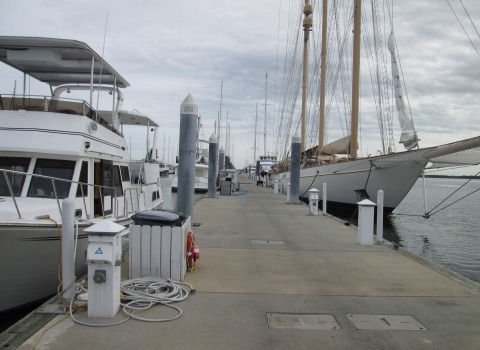
“The U.S. Fish and Wildlife Service is distributing more than $14 million in Clean Vessel Act grants to improve water quality and increase opportunities for fishing, shellfish harvests and safe swimming in the nation’s waterways. By helping recreational boaters properly dispose of sewage, this year’s grants will improve conditions for local communities, wildlife and recreational boaters in 18 states and Guam.”
7. Bornean clouded leopard family filmed in wild for first time ever

“Camera traps in Tanjung Puting National Park in Indonesian Borneo have captured a Bornean clouded leopard mother and her two cubs wandering through a forest. It's the first time a family of these endangered leopards has been caught on camera in the wild, according [to] staff from the Orangutan Foundation who placed camera traps throughout the forest to learn more about the elusive species.”
8. Toy library helps parents save money 'and the planet'

“Started in 2015 by Annie Berry, South Bristol's toy library aims to reduce waste and allow more children access to more - and sometimes expensive - toys. [...] Ms Berry partnered with the St Philips recycling centre on a pilot project to rescue items back from landfill, bringing more toys into the library. [...] [P]eople use it to support the environment, take out toys that they might not have the space for at home or be able to afford, and allow children to pick non-gender specific toys.”
9. Chicago Receives $3M Grant to Inventory Its Trees and Create Plan to Manage City’s Urban Forest

“The Chicago Park District received a $1.48 million grant [“made available through the federal Inflation Reduction Act”] to complete a 100% inventory of its estimated 250,000 trees, develop an urban forestry management plan and plant 200 trees in disadvantaged areas with the highest need. As with the city, development of the management plan is expected to involve significant community input.”
10. Strong Public Support for Indigenous Co-Stewardship Plan for Bears Ears National Monument
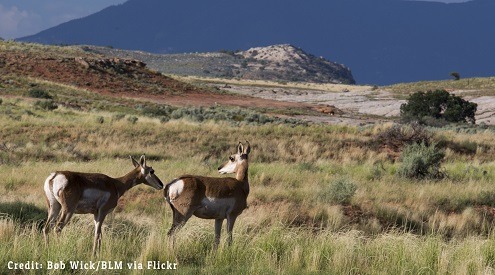
“[The NFW has a] plan to collaboratively steward Bears Ears National Monument to safeguard wildlife, protect cultural resources, and better manage outdoor recreation. The plan was the result of a two-year collaboration among the five Tribes of the Bears Ears Inter-Tribal Coalition and upholds Tribal sovereignty, incorporates Traditional Ecological Knowledge, and responsibly manages the monument for hunting, fishing, and other outdoor recreation while ensuring the continued health of the ecosystem.”
June 1-7 news here | (all credit for images and written material can be found at the source linked; I don’t claim credit for anything but curating.)
#hopepunk#good news#nature#horse#rare breed#energy storage#clean energy#biodiversity#street lights#lgbtq#health#native plants#invasive species#incentive#fws#water#fishing#swimming#clouded leopard#indonesia#library#kids toys#interdependence#bristol#uk#funding#native#outdoor recreation#animals#wildlife
735 notes
·
View notes
